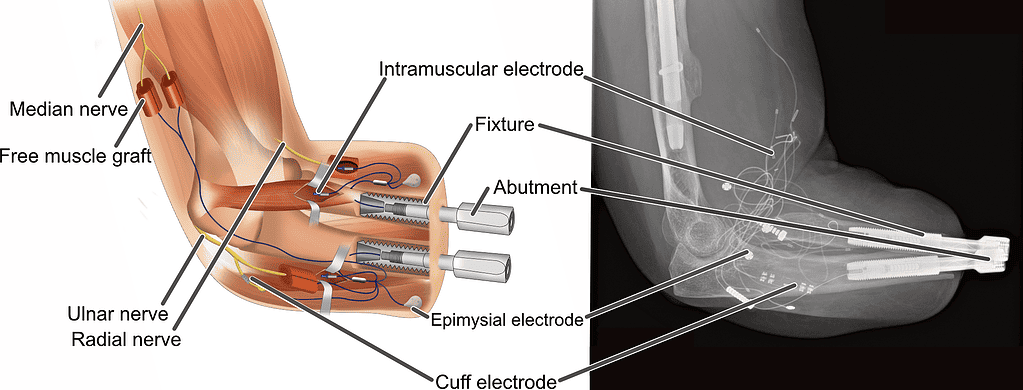In 2020, a team of international researchers developed a battery-powered bionic arm capable of performing 80% of the tasks that a real human arm can do. Now, the researchers released exciting new results. They tested the bionic hand on a 50-year-old Swedish patient Karen who lost her arm 20 years ago in an accident. The hand passed the test with flying colors.

Karen previously used conventional prostheses but she found them uncomfortable and working with them was very painful and unpleasant. To overcome her limb pain, she used to take a heavy dose of painkillers on a regular basis.
Three years ago, she became the first patient with below elbow amputation to receive the bionic arm which is called “Mia Hand” and since then, she has been using it to perform day-to-day tasks. While sharing her experience, Karen told the New York Post:
“I now have better control over my prosthesis, but above all, my pain has decreased. Today, I need much less medication. For me, this research has meant a lot, as it has given me a better life.”
Mia Hand works in sync with the brain and skeleton
The researchers claim to have developed the world’s first artificial limb that can be successfully integrated with a patient’s nervous system, bones, and muscles. Moreover, it also employs AI to understand the user’s commands and adapt to what its user is trying to do.
Using the Mia Hand, Karen is able to grab objects, open and close doors, cook food, zip and unzip a bag, and even feel some sensations.
“We’re still far away from Luke Skywalker’s hand. We’re still not close to all the functions of a biological hand, but we definitely made a considerable step forward,” Max Ortiz-Catalan, lead researcher and Director of the Center for Bionics and Pain Research in Sweden, told CNN.

Existing prosthetic solutions are also helpful to many patients but they have two big limitations; first is that they work as mechanical attachments so often patients experience a lot of pain and discomfort when they use them.
Second is that they offer limited control, a real arm works under the control of our brains, but a patient can’t control a mechanical attachment the same way. This is where Mia Hand can make a huge difference.
To sync their bionic hand with Karen’s brain and skeleton, the researchers used two distinct surgical methods called osseointegration and targeted muscle reinnervation (TMR).
The former technique involves implanting a titanium fixture into bones (radius and ulna) and electrodes in nerves and muscles to create a stable connection between them. It directly anchors the artificial arm to the skeletal system. Meanwhile, s the latter is done for rerouting nerves from an amputated limb to the remaining muscles in the residual limb. This allows more intuitive control over the bionic arm, as the patient can now use their existing muscle signals to control the prosthesis.
“Implanted electrodes with feedthrough connections through the titanium implant allowed for the safe and stable acquisition of neuromuscular signals, resulting in bionic hand control that was suitable for long-term use in daily life,” the researchers note.
One handy innovation can transform millions of lives
According to a report from Ohio State University, nearly two million people in the US are coping with limb loss, and out of them, 1.77 million individuals are living with below-elbow amputations. Mia Hand can make the lives of these people much better and easier.
“The fact that Karen has been able to use her prosthesis comfortably and effectively in daily activities for years is a promising testament to the potential life-changing capabilities of this novel technology for individuals facing limb loss,” said Ortiz Catalan.
Of course, it is far away from fully restoring the function of a biological hand still it’s a significant improvement over existing prostheses. Plus, Mia Hand also proves that it is possible to integrate human biology with robotic applications, opening up possibilities for innovative developments in the fields of surgery, neuroprosthetics, and bionics.
The researchers are currently working towards increasing the number of movements and improving the bionic arm’s ability to experience sensations. They hope to make Mia Hand commercially available in a couple of years from now.
The study is published in the journal Science Robotics.


